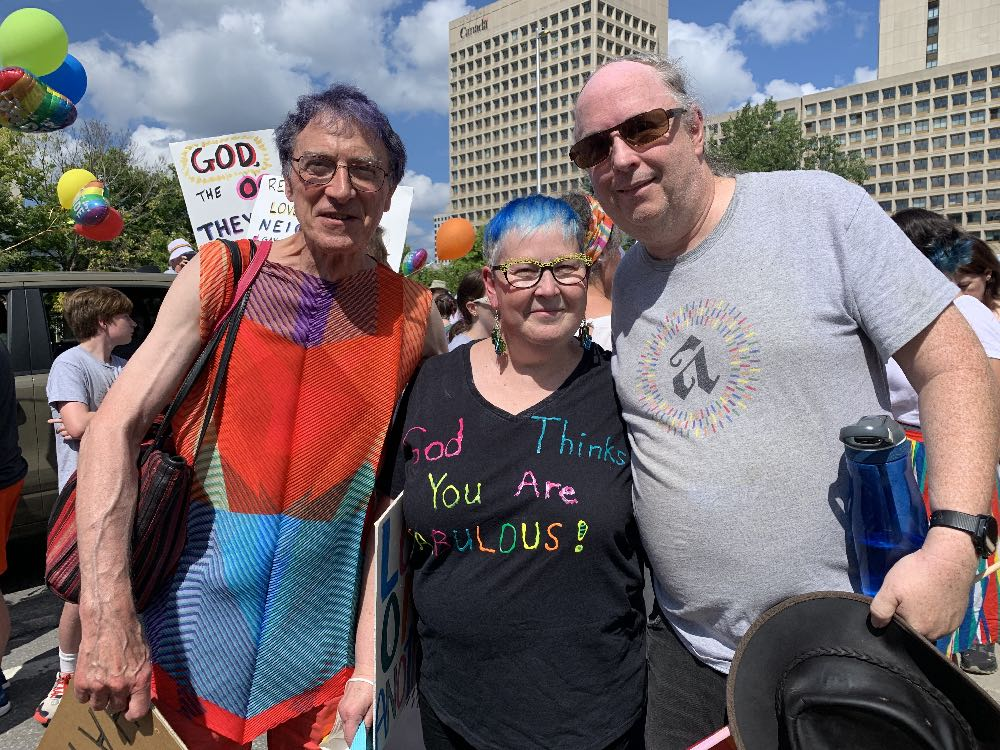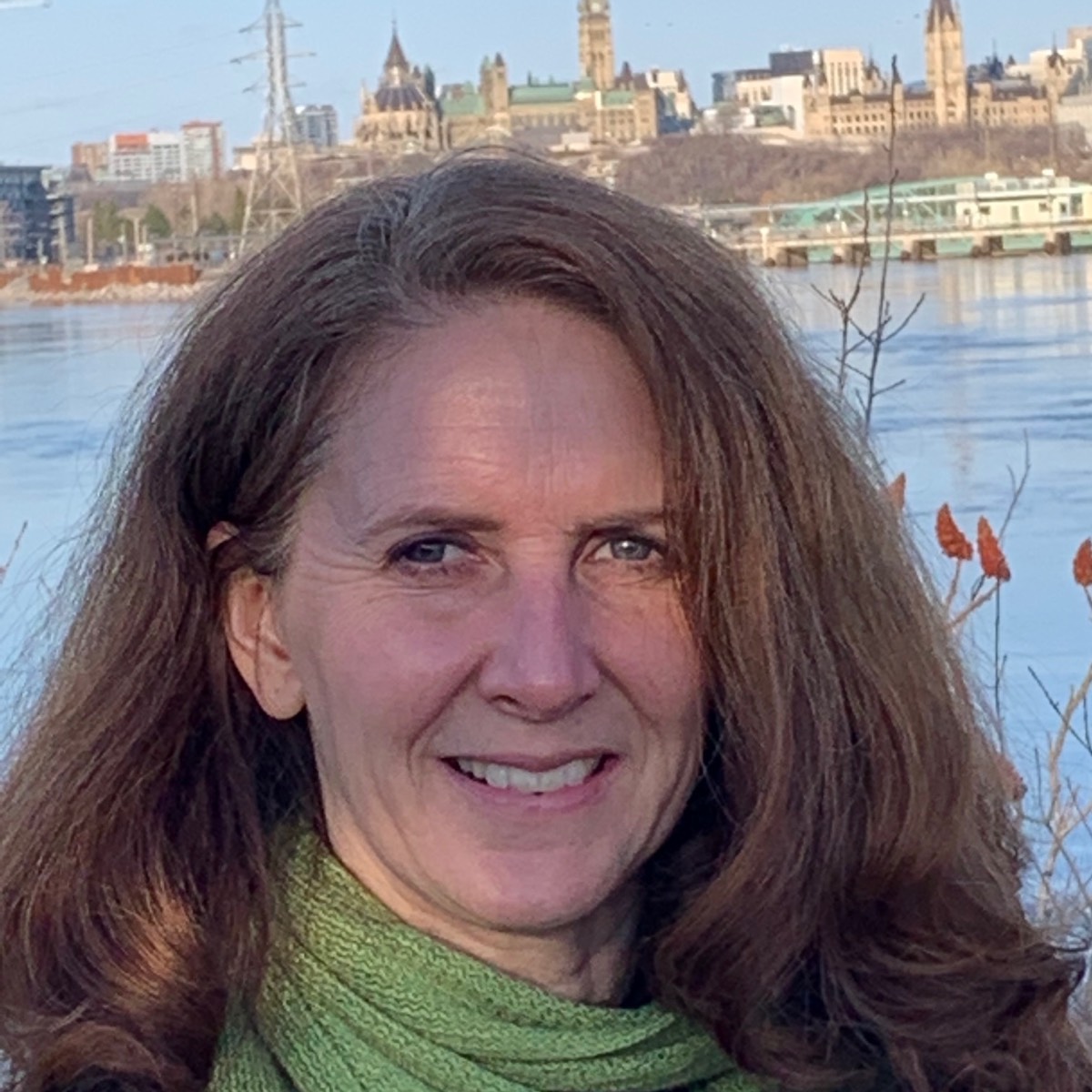Anglicans of all ages and from multiple parishes walked among 200 groups and an estimated 10,000 participants in the 2023 Pride March on Aug. 27. The lively bunch smiled and waved back to the cheering crowd of thousands more who lined the downtown Ottawa all along the march’s route.
Marchers carrying a banner from the Anglican Diocese of Ottawa led the group and were followed by people carrying banners and signs from Church of the Ascension, Trinity Anglican Church, St. Albans and St. John’s Richmond. There was also a sizeable group from St. John the Evangelist, which rang its bell as the march passed its building at the corner of Somerset and Elgin streets.
Participating was a concrete way for Anglicans to support the 2SLGBTQI+ community, which Anglican Diocese of Ottawa Bishop Shane Parker pointed out in a June pastoral letter has recently faced “an alarming increase of offensive or hateful words, actions, and political posturing,” both in Canada and abroad. The bishop noted that “as followers of Jesus, we are rightfully concerned and vigilant when we see any individual or group being unjustly targeted. In the Baptismal Covenant of our Church, we vow ‘to seek and serve Christ in all persons; to strive for justice and peace among people, and to respect the dignity of every human being.”
Gillian Wallace was one of the people who spearheaded Anglican participation in the March 29 years ago, and she told Crosstalk what the march was like in those days. “It started as a protest. In the early days of the Pride parade, there was nobody here but gay people and their allies. There were no police, no firemen, no school boards. There were no banks, no community groups. There was nobody here. And it was a small thing. There were a couple of Christians carrying hateful signs.”
That was the how the Anglicans first started in the march, she said. “Alex Munter, who was then a city councillor, asked Ron Chaplin if he knew anybody, any Christian, who would be willing to take on those nasty signs. And he said, ‘Oh yes, I know someone.’” He called Wallace.
“Alex paid for all the sign materials, and we made up a bunch of signs, and I actually sat at the marching point and asked people if they’d help carry them. And we stood beside the ‘anti’ Christian signs with our own positive Christian signs,” she said. “And at first people would boo us and then their faces would light up. And it was the most beautiful thing.”
In the following years, when the march went down Elgin Street, parishioners at St. John the Evangelist started providing cookies and lemonade in front of the church. Gradually Anglican participation grew. Wallace recalls that the United Church joined in the effort and more churches began to get involved.
“The thing that has struck me the most [is that] over the first few years we were greeted with tears and hugs. People were overwhelmed to get a message that God loved them because all they had ever heard was hatred,” she said. “So over the first few years it was love and cheering and tears. So I assumed that as the [decades passed] that would die down. It never has. The religious right has done so much damage that people still greet us with tears, with cheers. They are still overwhelmed to see us here. And it is still powerfully important for Christians to be here sharing God’s message of love.”





Listening for God’s voice in a time of change